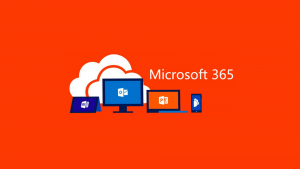Learn how Customer Journey Mapping can help grow your business. Do your sales reps prioritize selling products over delivering a positive customer experience? If so, it’s time to change your mindset to focus on the customer’s perspective. By adopting a buyer-centric approach and understanding their journey, you can cultivate customer loyalty and drive sales growth.
That’s where customer journey mapping comes in. Getting a holistic understanding of your customer’s buying behavior is essential so you can quickly resolve any issues they may face. With a detailed understanding of each touchpoint in the customer journey, you can create an effective and efficient customer experience strategy to convert more leads into sales.
To succeed in today’s competitive market, businesses must prioritize the customer’s journey over increasing product sales. By thinking like a buyer, your sales representatives can create a personalized and engaging experience that builds customer loyalty. So take the time to map out your customer’s journey, and watch as your business grows and thrives.
In simple terms, a customer journey map is a visual storyline of every engagement a customer has with a service, brand, or product.
The creation of a journey map puts the organization directly in the mind of the consumer, so they can see and understand their customer’s processes, needs, and perceptions. That said, below are a few things that you’ll need to consider.
What Is Customer Journey Mapping?
Customer Journey Mapping involves creating a visual representation of a customer’s interactions with your brand to gain insights into their pain points and improve their experience. The process starts by mapping out all potential touchpoints, such as social media and websites. Then, user journeys are created for each buyer persona across these touchpoints.
The customer experience at each touchpoint is included in the map, highlighting the actions the customer takes and how the brand responds. So, what does a customer journey map look like? The appearance of a customer journey map varies and can be created using various methods such as infographics, spreadsheets, whiteboards, or even a hand-drawn map.
However, the map is unlikely to be linear as the customer journey is not straightforward and will involve twists, turns, multiple channels, and cycles. The important thing is that the map is coherent with your team and accurately depicts your company’s customer journey. It’s a visual storyline of every engagement a customer has with a service, brand, or product.
In simple terms, the creation of a customer journey map puts your organization directly in the mind of the consumer, so they can see and understand their customer’s processes, needs, and perceptions.
How Customer Journey Mapping Can Help Grow Your Business
Of course, you may think mapping out your customer’s journey isn’t necessary for your company because you already understand their needs and pain points. But, this is only the surface level of customer understanding. Defining customer needs, problems, and interactions with your company may seem overwhelming and at times, unnecessary, but it’s very important.
Basically, understanding every customer’s experience at each stage of the customer journey is crucial for turning business insights into long-term improvement strategies. Creating a customer journey map can help you and your company visualize how customers feel at all brand touchpoints. So you can avoid potential issues ahead of time, increase customer retention, etc.
As well as discover key information to make the best decisions for your business. A journey map lays out all touchpoints that your customer may have with your brand – from how they first heard of you through social media or brand advertising, to their direct interactions with your product, website, or support team. It includes all of the actions your customer takes.
Especially, so as to complete an objective across a period of time. Understanding the customer journey from an empathetic, bird’s eye view will give you deeper insight into customer needs at every touchpoint so you can take the steps to meet their expectations.
Be that as it may, you may consider the following benefits to help you in your next business projects.
1. Customer Experience
Outlining your current processes helps to visualize what the customer is experiencing in real-time and may unveil common pain points that need to be addressed. Through this mapping process, you’ll also be able to connect with your buyer and in turn, influence your organization to prioritize the Customer Experience (CX) through shared understanding.
How do they feel when they can’t get in touch with customer service on an issue they’re experiencing? Or, if their package doesn’t arrive on time? You may be imagining a situation where those instances happened to you outside of the workplace and can remember feelings of frustration. You assume this customer may feel the same and can relate to their sentiment.
The ability to establish empathy for your customers and identify how they’re feeling at every turn is what makes customer journey mapping, a powerful exercise. A customer journey map – or customer experience map – expands that empathy on a broader level so you have a true understanding of their experience and can be meaningful in various aspects.
Such as your organization’s customer experience improvement strategies. Utilizing this approach allows you to take your customer’s perspective and use it as an opportunity to find solutions to any problem they may face when interacting with you.
2. Increase ROI
By using customer journey mapping, businesses can gain a deeper understanding of their customer’s behavior and intentions, which can be used to target and approach them on a more personal level with tailored marketing messages. This enables businesses to leverage data to make more informed decisions about their customer interactions.
Through personalized messaging, businesses can elicit a positive reaction from customers, turning them into brand advocates who recommend the company to others. This generates positive feedback and a compelling return on investment, as money spent on developing tailored messages is well-spent. This approach can increase customer loyalty and ultimately drive business growth and success.
3. Enhance sales cycles
One significant advantage of utilizing customer journey mapping is that it can enhance your sales cycle. Delivering a seamless customer experience should be your primary goal across all channels. By optimizing each touchpoint, companies can accelerate their sales cycle, ensuring that every department is aligned regarding customer engagement.
When all departments collaborate, it reduces the likelihood of customers encountering any difficulties during their interactions with your business. Moreover, if any issues arise, departments can work together to resolve them promptly. This enables customers to receive accurate information and proceed smoothly through the sales cycle. As a result, businesses can speed up their sales cycle and increase customer satisfaction.
4. Boost security and compliance measures
Buyer journey mapping can also help businesses demonstrate compliance with security and data privacy regulations. Say, for example, you are undergoing a SOC 2 readiness assessment. SOC 2 is a framework designed to help businesses ensure the security, availability, processing integrity, confidentiality, and privacy of their systems and data.
By mapping out the customer journey, companies can identify areas where they may need to implement additional security measures or processes to meet SOC 2 requirements. This can help businesses prepare for the assessment and ensure they meet the necessary data security and privacy standards.
5. Fill in gaps in customer service
Customer journey maps can help businesses identify customer service and communication gaps. For instance, if a company has developed a mobile-friendly website, a journey map can determine whether or not the mobile version is well-optimized. By breaking down the customer journey into specific touchpoints, a map can reveal any issues customers might encounter.
Customer journey mapping can also highlight communication problems among a company’s employees. For instance, customer service agents may need more support from their colleagues during customer communication. These issues require immediate attention during the customer journey, and mapping the journey can help businesses identify and understand the gaps.
Final Thoughts:
In today’s market, prioritizing the customer journey is crucial for business success. Customer journey mapping can provide a holistic understanding of customer behavior, enhance the sales cycle, increase ROI, boost security and compliance measures, and identify gaps in customer service. Businesses can create personalized experiences that build loyalty and drive growth.
More so, by putting the customer first. Aligning towards the same company objectives is essential for strategic customer experience goal planning and success tracking. When you build a journey map, you have a customer-centered tool to refer to and distribute across the company. There’s no correct or incorrect way to create a customer journey map.
However, before you begin, consider aligning your map with a chosen customer persona and think through which journeys and stages make the most sense for your business to measure.









